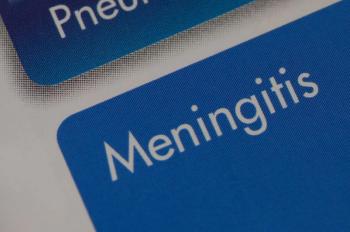
President Trump Signs Executive Order Significantly Decreasing US Drug Prices
The order is set to make patients’ prescription costs similar to other nations with the lowest-priced drugs in the world.
President Donald Trump signed an executive order Monday forcing drug manufacturers to lower their costs and make drug prices similar to the country with the lowest costs in the world, according to a White House news release.1 Serving as a wide-reaching provision that will impact millions of patients and providers around the world, President Trump claims that the order will slash drug prices in the US by 30% to 80%.2
“I will be signing one of the most consequential Executive Orders in our Country’s history,” Trump said on Truth Social.2 “Prescription Drug and Pharmaceutical prices will be REDUCED, almost immediately, by 30% to 80%. They will rise throughout the World in order to equalize and, for the first time in many years, bring FAIRNESS TO AMERICA! I will be instituting a MOST FAVORED NATION'S POLICY whereby the United States will pay the same price as the Nation that pays the lowest price anywhere in the World.”
READ MORE:
Aiming to bring drug costs down to what Trump calls a “Most-Favored-Nation” price,1 the order gives Secretary of Health and Human Services (HHS) Robert F. Kennedy Jr. authority to impose rules and other “aggressive measures” if manufacturers do not lower prices that reflect the most favored nation’s prescription costs.
However, before RFK Jr. even considers introducing further HHS measures, the release states that the Trump Administration will work with manufacturers to communicate their target prices for US prescriptions. It’s only if manufacturers fail to decrease their drugs’ list prices that RFK Jr. will be able to enforce further provisions based off the order.
According to Reuters, drug manufacturers will have 6 months to bring prices down to optimal, most-favored-nation prices.3
“White House officials said the government will give drugmakers price targets in the next 30 days, and will take further action to lower prices if those companies do not make ‘significant progress’ towards those goals within 6 months of the order being signed,” wrote Patrick Wingrove and Michael Erman for Reuters.
While this new order may seem like an unprecedented win for consumers, many experts and pharmaceutical industry employees are skeptical.
“If this touches all drugs for all people, it’s far more ambitious, but the ripple effects are far more uncertain,” said Tricia Neuman, executive director for the program on Medicare policy at KFF, according to NBC News.4 “I would expect the drug industry to throw every legal argument at this proposal.”
With a 30-day wait until drug price targets are set and another 5 months until prices have to decrease, uncertainty may be a common theme regarding this new order. This is also not the first time President Trump introduced the most-favored-nation drug-pricing policy, which was blocked by a federal judge during his first term as president.
This new order, however, is said to be “far more aggressive” than the one he introduced previously.4 While some entities within the drug supply chain are skeptical, the new order is designed to focus on patients and redefine the idea of prescription drug costs in the US.
In the US, patients pay anywhere from 3 to 10 times more than other countries for medications.1,4 As Trump stated in a follow-up Truth Social post, he’s predicting prices to decrease by 59%.2 Furthermore, in what may be positive for the pharmacy industry, the order is set to bypass the use of pharmacy benefit managers (PBMs).
“The Secretary of Health and Human Services will establish a mechanism through which American patients can buy their drugs directly from manufacturers who sell to Americans at a ‘Most-Favored-Nation’ price, bypassing middlemen,” continued the news release.1
Again, speaking to the sheer aggressiveness of this presidential action, many industry experts are not convinced that Trump’s second rendition of the most-favored-nation drug policy will be successful either.
“Importing foreign prices will cut billions of dollars from Medicare with no guarantee that it helps patients or improves their access to medicines,” said Stephen J. Ubl, president and CEO of PhRMA, according to KOB4.5 “It jeopardizes the hundreds of billions our member companies are planning to invest in America, making us more reliant on China for innovative medicines.”
The National Community Pharmacists Association (NCPA)—one of the key advocacy groups for independent pharmacists—also provided a skeptical statement regarding the order. While NCPA CEO Douglas Hoey, RPh, MBA, is uncertain of what it means for pharmacies, he also applauded the new order's bypassing of PBMs.
"We need to get more details on the president’s executive order as this will take time to sort out due to the complicated nature of drug pricing in this country," said Hoey, according to a news release.6 "However, we applaud any efforts to rein in PBM practices that increase drug costs. We urge President Trump to continue to focus on PBM middlemen and the way they artificially inflate the price of prescription drugs to pad their pockets. In fact, it is not a coincidence that the US pays more for drugs than any other country, and we are the only country in the world in which PBMs are hired to control drug prices."
With the order set to enforce abrupt change in the pharmaceutical industry, the future of the drug supply chain is expected to carry significant uncertainty as provisions under the new policy begin to be deliberated upon.
“President Trump is delivering on his promise to once again put America first by furthering efforts to get American patients and taxpayers a fair deal for prescription drugs,” concluded the White House news release.1
READ MORE:
Pharmacy practice is always changing. Stay ahead of the curve: Sign up for our
References
1. Fact sheet: President Donald J. Trump announces actions to put American patients first by lowering drug prices and stopping foreign free-riding on American pharmaceutical innovation. News Release. The White House. May 12, 2025. Accessed May 12, 2025. https://www.whitehouse.gov/fact-sheets/2025/05/fact-sheet-president-donald-j-trump-announces-actions-to-put-american-patients-first-by-lowering-drug-prices-and-stopping-foreign-free-riding-on-american-pharmaceutical-innovation/
2. Trump DJ. Donald J. Trump. Truth Social. 2025. https://truthsocial.com/@realDonaldTrump
3. Wingrove P, Erman M. Trump calls for broad drug price cuts in executive order, wants at least 59% drop. Reuters. May 12, 2025. Accessed May 12, 2025. https://www.reuters.com/business/healthcare-pharmaceuticals/trump-says-he-will-cut-drug-prices-by-59-2025-05-12/
4. Lovelace Jr. B. Trump signs executive order to slash drug prices, possibly including weight-loss drugs. NBC News. May 12, 2025. Accessed May 12, 2025. https://www.nbcnews.com/health/health-news/trump-executive-order-prescription-drugs-price-match-rcna206218
5. Seitz A, Kim SM. Trump signs executive order setting 30-day deadline for drugmakers to lower prescription drug costs. KOB4. May 12, 2025. Accessed May 12, 2025. https://www.kob.com/news/business-money/trump-sign-executive-order-setting-30-day-deadline-for-drugmakers-to-lower-prescription-drug-costs/
6. NCPA statement on POTUS executive order on most favored nation drug pricing. News Release. NCPA. May 12, 2025. Accessed May 12, 2025. https://www.ncpa.org/newsroom/news-releases/2025/05/12/ncpa-statement-potus-executive-order-most-favored-nation-drug
Newsletter
Pharmacy practice is always changing. Stay ahead of the curve with the Drug Topics newsletter and get the latest drug information, industry trends, and patient care tips.






































































































































